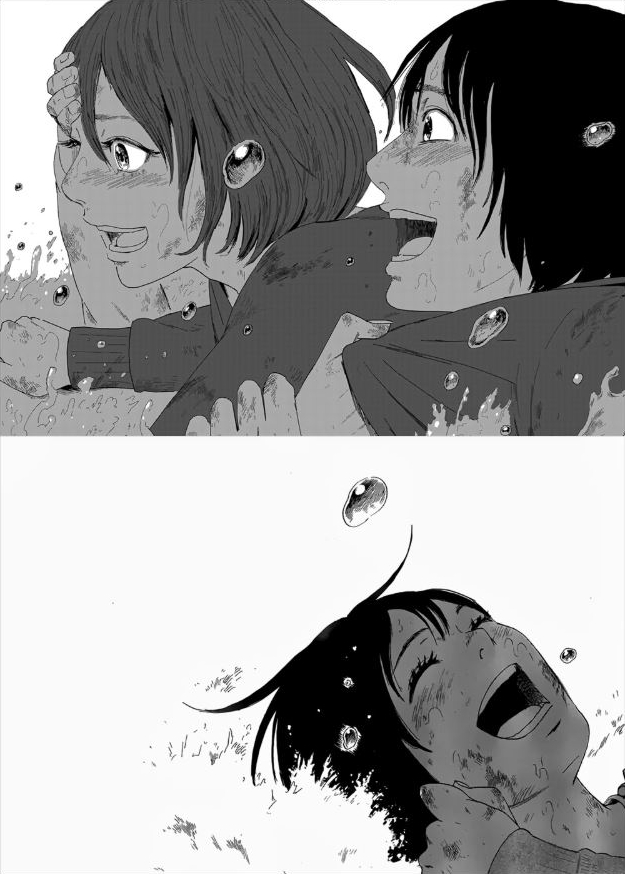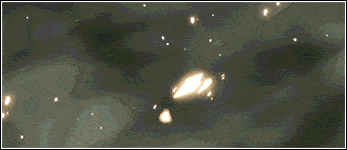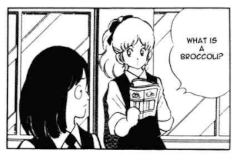Sad to see that not many can offer much beyond surface level confused reactions to the incredible visual storytelling the mangaka achieved with this chapter. For me, however, the full four-page spread of the three roughhousing in the ocean waves is hands down one of the best few pages of any manga I've read.
AironicallyHuman said:
No other image can summarise the wtf of Kasuga bizarrely using wrestling moves on Nakamura without provocation - some good ol' fashioned GBH - and then all three laughing together at the end. No explanation of Nakamura's logic behind her having pushed Kasuga away, or why she's different now. Or anything, honestly. It made little to no sense.
I liked Aya a lot, and I was happy to see Kasuga become the 'normie' he always in reality was when trying to pretend he wasn't empty to impress. But it showed a lack of planning and was weak on the author's part that he used a timeskip to write himself out of a corner and then left the Nakamura/Saeki love triangle unresolved besides cameos. This chapter convinced me had no idea what to do with Nakamura.
Completely disagree with this. The author has merely decided to go for a more show and not tell approach, and the timeskip represents how often things in life progress without us wanting to, how life keeps moving on regardless of how much we desire to stay in the moment and "resolve" things first.
I don't claim to offer insight into the author's true intentions, but Nakamura appears in the first act as someone with a divergent viewpoint who triggers Kasuga's desire for perversion as a way out of his dull everyday, leading him down a spiral of insanity beyond the normalcy that Kasuga wanted to escape. Of course, this got cut short after the incident with the festival, and all three of Kasuga, Nakamura, and Saeki were forced to grow up after moving away. The timeskip teaches us that not everything in life can be neatly resolved, and we see this in how Kasuga, Nakamura, and Saeki continue to live and let live despite the possibility of their past weighing down on their present.
After the timeskip, while likely maintaining some trace of her former worldview, Nakamura has calmed down a lot and no longer wants to drag others into her madness, which itself seems to be dissipating with her pursuit of normal life as well. This transformation represents her reaching maturity and moving on with life, which Kasuga finally realizes after meeting her again. Throughout the story, Nakamura remains as a transformative presence in Kasuga's life, first enticing Kasuga with the childhood extremes of contrarian behavior but ultimately acting as the final catalyst to help Kasuga move on from his past and embrace his future with Tokiwa as a happy adult.
The roughhousing at the end of this chapter represents catharsis on the part of Kasuga, Nakamura, and Tokiwa, all of who can finally accept what happened in the past and move on without any bad blood. Their "fight" is a physical expression of the emotions that they cannot express with words alone; humans are irrational, emotional beings, and their roughhousing manages to convey this aspect of our nature perfectly without resorting to some half-baked dialogue resolution to the tension between Kasuga, Nakamura, and Tokiwa.
However, what starts off as just Kasuga and Nakamura seemingly lashing out at each other culminates into a liberating session of all three roughhousing in the water with brilliant smiles on everyone's faces. The three--without holding back--batter each other in the ocean waves with the emotions they had previously bottled up, in order to ensure that everyone will have nothing to regret when moving on. Of course, this type of wordless storytelling relies on the strength of the symbolism and visuals, but by relegating the deeper revelations and bildungsroman (maturation) to his visuals, the author keeps interpretation open-ended. I believe this approach to be far more masterful and respectful of us as his readers than delineating a single interpretation for us to accept.
In the end, this will forever remain one of my favorite chapters in all of manga.
 |









